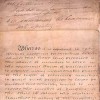Romanticism: A Class Chronology
Created by Dino Franco Felluga on Mon, 08/12/2019 - 11:58
Part of Group:
 This timeline is part of ENGL 202's build assignment. Research some aspect of Romanticism and then contribute what you have learned to our shared class resource. As the assignment states, "Add one timeline element, one map element and one gallery image about the Romantic period to our collective resources in COVE Editions. Provide sufficient detail to explain the historical or cultural detail that you are presenting. Interlink the three objects. A few timeline elements have already been added (borrowing from BRANCH).
This timeline is part of ENGL 202's build assignment. Research some aspect of Romanticism and then contribute what you have learned to our shared class resource. As the assignment states, "Add one timeline element, one map element and one gallery image about the Romantic period to our collective resources in COVE Editions. Provide sufficient detail to explain the historical or cultural detail that you are presenting. Interlink the three objects. A few timeline elements have already been added (borrowing from BRANCH).
Timeline
Chronological table
| Date | Event | Created by | Associated Places | |
|---|---|---|---|---|
| 28 Jun 1712 to 2 Jul 1778 |
Jean-Jacques RousseauJean-Jacques Rousseau, born in Geneva, Switzerland, is named "The Father of Romanticism" because of his work in the Enlightenment period, where he wrote a very detailed and uncensored autobiography, titled Confessions. Rousseau's thinking was so forward, it did not conform to societal rules of the Elightenment period, paving the way for other creative minds to share their work in the upcoming era. This provided writers such as Mary Shelley, Edgar Allen Poe, and John Keats with a window of opportunity to show their creativity in their "abnormal" works. The individuality of their pieces brought forth the freedom, love of nature, and expressionism of the Romantic period. |
Evangelia Kaplanis | ||
| 28 Jun 1712 to 2 Jul 1778 |
Jean-Jacques RousseauJean-Jacques Rousseau, born in Geneva, Switzerland, is named "The Father of Romanticism" because of his work in the Enlightenment period, where he wrote a very detailed and uncencored autobiography, titled Confessions. Rousseau's thinking was so forward, it did not conform to societal rules of the Elightenment period, paving the way for other creative minds to share their work in the upcoming era. This provided writers such as Mary Shelley, Edgar Allen Poe, and John Keats with a window of opportunity to show their creativity in their "abnormal" works. The individuality of their pieces brought forth the freedom, love of nature, and expressionism of the Romantic period. |
Evangelia Kaplanis | ||
| 1772 to 1846 |
Bass Clarinet: A new timbre for new timesMusic in the Romantic Era began to deviate from Classical conventions within all elements of music including tempo, dynamics, key and time signatures, and instrumental timbres. Varying timbre, in particular, was crucial for expressing the full range of emotions composers creatively sought to convey. A need for depth inspired the creation of new instruments, such as the bass clarinet. Originally deemed Gilles Lot's "basse-tube" in Paris 1772, the bass clarinet helped provide a richer, 3-octave sound that other reed instruments could not quite evoke. There were other variations created over the next 20 years bearing likenesses to a bassoon or saxophone, but the man credited for the most modern rendition is Adolphe Sax in the 1830's (patented in 1846). It was then that this instrument found its way into orchestral pieces-- scored solo by Giacomo Meyerbeer, then greatly popularized by composers Franz Liszt and Richard Wagner. The bass clarinet remains a versatile staple to major arranged works today, as its range is broader than any other non-percussion instrument. |
Liddy Freeman | ||
| 17 Mar 1789 |
The Birth of Edmund KeanEdmund Kean was a famous british stage actor who revolutionized the protrayal of Shakesperian villians in the Romantic Period. Before Kean, Shakespearian actors were see as up-standing, tall, handsome, aristocratic men. Kean, however, was praised for his wild, theatrical, distorted protrayal in Shakespeare classics like Othello, Macbeth, Hamlet, King Lear, and more. Kean had a big hand in revitalizing and reinventing Shakespeare productions, mainly the tragedies, completely changing the perception and adaptations of Shakespeare for the rest of the Romantic period and on. Haunted by many demons and not handling fame well, his acting career was cut short, as his life ended after only 45 years. Even though his career was not long, he influenced many stage actors and writers of the Romantic period. Samuel Coleridge even claimed that "Seeing him act was like reading Shakespeare by flashes of lightning", showing just how influential and electric Kean was as an actor and story teller. https://www.thestage.co.uk/features/2018/rise-and-fall-of-the-great-georgian-actor-edmund-kean/ |
Caroline Cross | ||
| 5 May 1789 to 10 Nov 1799 |
French Revolution
On 5 May 1789, the Estates-General, representing the nobility, the clergy, and the common people, held a meeting at the request of the King to address France’s financial difficulties. At this meeting, the Third Estate (the commoners) protested the merely symbolic double representation that they had been granted by the King. This protest resulted in a fracture among the three estates and precipitated the French Revolution. On 17 June, members of the Third Estate designated themselves the National Assembly and claimed to represent the people of the nation, thus preparing the way for the foundation of the republic. Several pivotal events followed in quick succession: the storming of the Bastille (14 July), the approval of the Declaration of the Rights of Man and of the Citizen (26 August), and the march on Versailles that led to the enforced relocation of the royal family to Paris (5-6 October). These revolutionary acts fired the imagination of many regarding the political future of France, and, indeed, all of Europe. The republican period of the revolution continued in various phases until 9-10 November 1799 when Napoleon Bonaparte supplanted the government. ArticlesDiane Piccitto, "On 1793 and the Aftermath of the French Revolution" |
David Rettenmaier | ||
| 1792 |
"Vindication of the Rights of Woman" is PublishedMary Wollstonecraft's A Vindication of the Rights of Woman is considered a “trailblazing” work for feminism (Britannica). In the piece, Wollstonecraft addresses womanhood of the middle class and criticizes what was considered a female education at the time. While men receive an education of the mind and body, women are taught to act weak, to dedicate their time to finery and fashion. Neglecting to teach women anything other than how to be attractive on the “marriage market”, will only leave them without profession, without money, and without honor or promise of redemption if they are left or divorced by their husbands. Wollstonecraft believed that women could contribute more to society than just a wife and mother. She writes, “I attribute to a false system of education, gathered from the books written on this subject by men who, considering females rather as women than human creatures ...are only anxious to inspire love, when they ought to cherish a nobler ambition, and by their abilities and virtues exact respect”. The thinking at this time was that women’s obsession with marriage and delicacy was natural, but Wollstonecraft uses her work to demonstrate that this is a result of women’s artificial education. She argues that if men and women are raised with the same aspirations, than the differences between them will/can be considered more natural. She suggests a total education — one that shapes the whole person — of both sexes. This, she argues, will benefit all of society. Although Wollstonecraft’s work was well-received within within her own intellectual circle, the rest of society’s reaction was negative. The ideas expressed in A Vindication of the Rights of Woman were very radical for her time, but would later provide a solid platform for Romantic feminists who worked to improve the lives of women. To learn more about the reactions to Wollstonecraft’s work, click here. To learn more about Romantic Feminism, click here. To learn more about Mary Wollstonecraft, click here. Sources: https://www.britannica.com/biography/Mary-Wollstonecraft http://web.utk.edu/~gerard/romanticpolitics/feminism.html https://www.bl.uk/collection-items/mary-wollstonecraft-a-vindication-of-the-rights-of-woman http://shelleysghost.bodleian.ox.ac.uk/godwin-meets-mary-wollstonecraft#Description |
Elizabeth Schafer | ||
| 1 Jan 1792 |
Vindication of the Rights of Woman
ArticlesAnne K. Mellor, "On the Publication of A Vindication of the Rights of Woman" Related Articles |
David Rettenmaier | ||
| Jun 1792 |
Botanic Garden
ArticlesSiobhan Carroll, “On Erasmus Darwin’s The Botanic Garden, 1791-1792″ |
David Rettenmaier | ||
| 21 Jan 1793 |
Execution of King Louis XVI
1793 was a key juncture in the revolution, beginning with this execution on 21 January. The increasing violence prompted Britain to cut its ties to France, leading to declarations of war by the two countries. Violence peaked during the Reign of Terror (5 September 1793 – 27 July 1794), which resulted in the execution of the Queen (16 October) as well as of many suspects of treason and members of the Girondins, the more moderate faction that the radical Jacobins brought down on 2 June 1793 ArticlesDiane Piccitto, "On 1793 and the Aftermath of the French Revolution" |
David Rettenmaier | ||
| 13 Jul 1793 to 13 Jul 1793 |
The Assassination of Jean-Paul MaratIn the summer of 1793, Jean-Paul Marat was assassinated by Charlotte Corday of Caen. Corday's allegiances were Girondin and she blamed Marat for the atrocities of the September Massacre the year before, an event which he was a major proponent for. She arrived to Marat's flat under the guise of having news of Girondin activity in Normandy, and Jean-Paul's wife let her into his medicinal bathing chambers, for Marat suffered from a rare skin disease. Corday ditched her facade after he confirmed his violent intention for the Girondins, driving a dagger into his chest. Corday was then caught, tried and guillotined, with no resistance on her part. The death of Marat would rally Montagnard (Jacobin) forces against the Girondins, eventually leading to the Jacobins' Reign of Terror, perpetuated by ther rally cries of Jacques-Louis David's artwork of the scene. Both Corday and Marat were portrayed as martyrs for their actions to their respective factions, immortalizing the events in the wake of the escalation of conflict deeply embedded in France during the revolution.
References: https://www.history.com/this-day-in-history/charlotte-corday-assassinates-marat |
Lake Blocher | ||
| 5 Sep 1793 to 27 Jul 1794 |
Reign of Terror
On 5 September 1793, the National Convention, France’s ruling body from 1793 to 1795, officially put into effect terror measures in order to subdue opposition to and punish insufficient support for the revolution and the new regime. From the autumn of 1793 until the summer of 1794, thousands of people across the country were imprisoned and executed (including the Queen) under the ruthless leadership of Maximilien Robespierre. The guillotine, particularly the one in Paris’s Place de la Révolution, served as the bloody emblem of the fear tactics that began to manifest themselves first in the formation of the Committee of Public Safety (6 April 1793) and subsequently in the implementation of the Law of Suspects (17 September 1793). The Terror ended on 27 July 1794 with the overthrow of Robespierre, who was guillotined the next day. ArticlesDiane Piccitto, "On 1793 and the Aftermath of the French Revolution" |
David Rettenmaier | ||
| 14 May 1796 to Jul 1796 |
The Smallpox VaccineOn May 14, 1796, Edward Jenner inoculated an 8-year old boy named James Phipps with cowpox. The cowpox matter came from a milkmaid named Sarah Nelms. Phipps would lose his appetite and grow cold 9 days later, but took a positive turn the next day eventually recovering. Later on, in July 1796, Jenner inoculated Phipps once again, this time with matter from a smallpox lesion. Phipps did not develop smallpox in this subsequent inoculation, leading Jenner to conclude that Phipps was fully protected. For this experiment, Jenner is widely credited as the inventor of the modern vaccine, though inoculations had been done in a similar fashion before Jenner. |
Kevin Davis | ||
| The end of the month Winter 1797 |
Friedrich Wilhelm Joseph Schelling is bornFriedrich Wilhelm Joseph Schelling, one of the famous German idealists, was born in Leonberg, Germany on January 27, 1797. He is best known for his literature concerning the philosophy of the natural world, and was a key figure of the Romantic period. Naturphilosophie, the German name for his school of thought, emphasizes the importance of harmony with the natural world. This symbolizes a departure from the Enlightenment era, which prioritized science and objective explanations of natural phenomena. As its name suggests, Romanticism shifted to focus on the sentiments attached to physical phenomena. Instead of studying the science behind nature, Romanticists focused on the impact of nature on the human experience. Schelling explored the connection between human spirituality and the natural world in a way that was not typical before the onset of Romaticism. Schelling was a prominent member of the German philosophical community until his death in 1854. His peers included Immanuel Kant, Johann Wolfgang von Goethe and Friedrich Engels. His other notable publications on the topic of naturphilosophie include Über die Möglichkeit einer Form der Philosophie Überhaupt and Philosophical Inquiries Concerning the Nature of Human Freedom. He was a professor of philosophy at the University of Jena as well as the University of Würzberg. |
Natalie Ciresi | ||
| May 1797 to 1 May 1821 |
Bank Restriction Period
The Bank Restriction Act codified the suspension of specie payments for a limited period and authorized the use of Bank of England notes as de facto currency (37 Geo III c. 45). The strict time frame of the Act bolstered public confidence in Bank of England notes by indicating that they would be redeemable for specie payments at a designated point in the foreseeable future. However, despite the Bank of England’s bullion reserve increasing as gold flowed into its coffers, thus enabling specie payments to be made, successive parliaments renewed the Bank Restriction Act annually until 1821. During these twenty-four years, known as the Bank Restriction Period, the Bank of England operated as a wing of the British Government, helping to finance the Napoleonic wars through its bullion reserve and by regulating the issue of credit. The Bank Restriction Act unwittingly encouraged banknote forgery on an unprecedented scale. ArticlesMark Crosby, “The Bank Restriction Act (1797) and Banknote Forgery” |
David Rettenmaier | ||
| 10 Sep 1797 |
Death of Wollstonecraft
ArticlesAnne K. Mellor, "On the Publication of A Vindication of the Rights of Woman" |
David Rettenmaier | ||
| Jan 1798 |
Memoirs of the Author of a VindicationOn January 1798, publication of William Godwin’s Memoirs of the Author of A Vindication of the Rights of Woman. The publication of this first biography of Wollstonecraft causes a scandal and Godwin publishes a second “corrected” edition of the Memoirs in the summer of the same year. ArticlesRelated ArticlesAnne K. Mellor, "On the Publication of A Vindication of the Rights of Woman" |
David Rettenmaier | ||
| 9 Nov 1799 to 18 Jun 1815 |
Napoleonic Wars
Historians do not agree on the exact beginning or end of the wars. November 9, 1799 is an early candidate since that is when Napoleon seized power in France. Hoping to ease the difficulty, historians date by isolated wars. They disarticulate the Napoleonic Wars in a linear series:
The successive numerical coordinates for the Coalitions offer regularity, but that regularity is undercut by the shifting make-up of that Coalition (sometimes Prussia was in, sometimes not; sometimes Russia, sometimes not) and by the discontinuity and ambiguity of the dates. Articles |
David Rettenmaier | ||
| Jan 1801 |
Inclosure Act
ArticlesCarolyn Lesjak, "1750 to the Present: Acts of Enclosure and Their Afterlife" (forthcoming) |
David Rettenmaier | ||
| 2 Dec 1804 |
The Coronation of Napoleon BonaparteThe official day that Napoleon Bonaparte transitioned from his title as First Consul of France to 'His Imperial Majesty,' Napoleon I, Emperor of the French People. Prior to his coronation and 'election' as emperor of France, Napoleon had only held military or civil titles in the First French Republic, which still placed him below or above others within the same hierarchy. By openly styling himself as a monarch, the emperor of the French people no less, Napoleon put himself above all others and made clear who commanded the French. In addition to the obvious importance the coronation had, its timing betrays how crucial Napoleon himself considered its completion to be. The coronation occurred only a year into the Napoleonic Wars, which would continue to rage on in various military theaters for the next decade. Napoleon saw his ascension to emperorship, to spend invaluable time away from his military conquests, to be more valuable at the time. Unfortunately for Napoleon I, his spectacular coronation would not continue on for his descendants, as the House of Bonaparte would only last for two more monarchs whose achievements remained far short of the founder of their dynasty. |
Shashank Dimri | ||
| 2 Dec 1804 |
Napoleon Bonaparte's CoronationNapoleon Bonaparte was coronated in Notre Dame Cathedral in Paris on December 2, 1804 as Emperor of the French. Bonaparte was a notorious war general who establish dominance of France through a coup. Napoleon wanted power and wanted to ensure that his reign would be taken seriously. When Napoleon staged the coup in 1799, it led to the end of the French Revolution. This period of time serves as a buffer between the pre-romantic and romantic eras. Napoleon had a senate that he chose entirely himself. This led to the senate votes going in Napoleon's favor by a landslide. His senate is who gave him the title of Emperor of the French. Napoleon essentially threatened Pope Pius VII into officiating his coronation. He wanted the Pope to officiate the coronation, so that it was different, and in terms better, than the coronations of the Kings of France. It was French tradition is that the monarchs ruled by divine right: God's will. Bonaparte knew the significance of ruling by divine right, and insisted that he gets the same treatment. Napoleon also crowning his wife Josephine as Empress, which is a title not used by the French at this point in a very long time. |
Ashley Doran | ||
| 17 Mar 1805 |
Kingdom of Italy founded
This crowning of Napoleon as King of Italy is a result of the French conquest of Italy. Napoleon was crowned King of Italy with the iron crown of Lombardy on 26 May 1805 (crown pictured above). His full title was "Emperor of the French and King of Italy." ArticlesAlison Chapman, "On Il Risorgimento" Related ArticlesErik Simpson, "On Corinne, Or Italy" Marjorie Stone, “On the Post Office Espionage Scandal, 1844″ |
David Rettenmaier | ||
| 26 May 1805 |
Napoleon made king of Italy
In a flamboyant and highly theatrical gesture, Napoleon Bonaparte signifies his political and military dominance over the Italian peninsula with a ceremony in Milan Cathedral, where he crowned himself King of Italy with the ancient, iconic iron crown of Lombardy. This crowning of Napoleon as King is a result of the French conquest of Italy. His full title was "Emperor of the French and King of Italy." ArticlesAlison Chapman, "On Il Risorgimento" Related Articles |
David Rettenmaier | ||
| 19 Jan 1809 to 7 Oct 1849 |
Life of Edgar Allan PoeREPOST AFTER DISCOVERY THAT I PUT IT IN THE WRONG PLACE One of the most famous authors of American Romanticism and its subset movement of Gothic Literature, Edgar Allan Poe lived from 1809 to 1849. Renowned for his skill with dark and twisted subject matter and his handling of gloomy, forbidden moods, Poe's short stories and poetry had a lasting influence on other Romantic writers of his time as well as modern horror, mystery, and gothic writing. Poe explored death and loss through his works as a sort of catharsis for the tragedy that occured throughout his life, refusing to shy away from difficult or disturbing subject matter. He was also an outspoken supporter of the "art for art's sake" movement and the mechanics of how writers improve their craft. The French Symbolists were greatly influenced by his work, taking inspiration on how to better convey personal emotion in their works and continuing the trend of emphasis on the individual and their experiences/desires, rather than those of a deity. He would also go on to influence authors such as Charles Baudelaire and Fyodor Dostoyevsky. Poe retains popularity today both in modern culture and in literature circles, and his work is still widely celebrated. His most famous works included: The Raven, The Cask of Amontillado, The Black Cat, The Tell-Tale Heart, and Annabelle Lee; NOTE: can't find how to make this stupid thing display the map like everyone else's, so I'm leaving a link to the map here: https://editions.covecollective.org/content/romanticism-class-map my entry was 'New York, The New York Mirror Publishing House', about the publication of the Raven PICTURE 1: Portrait shot of Edgar Allan Poe PICTURE 2: One of a series of steel-plate engravings made in tribute for 'The Raven' by artist Gustave Dore, released in 1884. Dore used heavy shadows to capture the gloomy/depressed mood of the piece, as well as a lot of religious imagery (particularly angels) throughout the series to represent death and the souls of the dead. Dore also did illustrations for authors like Lord Byron, Milton, Tennyson, and Dante. Scene pictured is the narrator of the Raven flinging open his window to try and see what was knocking, accidentlaly letting in the raven. Sources: https://www.brainpickings.org/2015/08/05/gustav-dore-poe-the-raven/ https://www.poetryfoundation.org/poets/edgar-allan-poe https://www.biography.com/writer/edgar-allan-poe https://www.britannica.com/art/Symbolism-literary-and-artistic-movement https://www.poemuseum.org/poes-biography Secondary note: If I find that I've forgotten something before the deadline, I'll come back and add it. I believe it's done, but I've forgotten stupid things before, and I can't find any option to save it as a draft. |
Emma Hamilton | ||
| 6 Apr 1814 to 26 Feb 1815 |
Napoleon exiled to ElbaNapoleon was exiled to Elba, an island in the Meditteranean, after he abdicated on 6 April 1814. He spent nine months and 21 days on the island, then attempted to retake his empire, leaving the island on 26 February 1815. Napoleon was definitively defeated at the Battle of Waterloo on 18 June 1815. |
Dino Franco Felluga | ||
| 10 Apr 1814 |
Battle of Toulouse
Related ArticlesSean Grass, “On the Death of the Duke of Wellington, 14 September 1852″ |
David Rettenmaier | ||
| May 1814 |
Wellington made Duke
ArticlesSean Grass, “On the Death of the Duke of Wellington, 14 September 1852″ |
David Rettenmaier | ||
| 1815 to 1822 |
The Brighton Royal PavilionThe Royal Pavilion in Brighton was originally built in 1787 as a vacation home for King George IV. The palace, located beside the beach on the southern English coastline, was initially constructed and decorated in the neoclassical style. In 1815, the royal family commissioned architect John Nash to expand the Pavilion. Nash, one of the most influential British architects, worked almost exclusively in the neoclassical style. However, his expansion of the palace, which survives today, is boldly Indo-Indian in design. Specifically, the palace draws heavily from the Mughal style of architecture, the most famous example of which is the Taj Mahal. The palace is topped with numerous tapered bulbs, which stick out above the rest of the town. The curves, domes, and spires on the new palace would have seemed wildly out of place in comparison to any other new architectural designs of the time. In fact, only a few years after the completion of the Pavilion, Nash began his design of Buckingham Palace – one of the most recognizable neoclassically-designed buildings in England. As soon as Nash’s expansion was complete in 1822, the Pavilion became a major public attraction due to its splendor and distinct foreignness. The interior was designed in a similarly exotic fashion. The walls and ceilings of many of the various halls are painted with murals depicting scenes from India and, especially, China. Though George IV had not visited the Far East, the British trading empire had extensive contact with the region, and it was through the return of Chinese and Indian luxuries to England that George IV developed his affinity for these cultures. Because of this indirect connection between the Far East, decorators, and George IV, Pavilion historians say that these original decorations were more Western interpretations of Eastern ideas than they were true to the actual Eastern designs. Shortly after George IV’s death in 1830, the royal family moved away from the Pavilion in favor of a new, more isolated retreat. The Pavilion was sold to the town of Brighton and remains a public attraction to this day, with many original artworks and pieces of furniture on display. |
Brad Nethercutt | ||
| 5 Apr 1815 |
Eruption of Tambora
This geological event led to the “Year Without a Summer,” the worldwide effect of atmospheric debris and aerosols on climate and crops, especially severe in Eastern North America, Western Europe, and China. In fact, the "Year Without a Summer" belongs to a three-year period of severe climate deterioration of global scope caused by the eruption. With plummeting temperatures, and disruption to major weather systems, human communities across the globe faced crop failures, epidemic disease, and civil unrest on a catastrophic scale. Articles |
David Rettenmaier | ||
| 18 Jun 1815 |
Battle of Waterloo
Related ArticlesSean Grass, “On the Death of the Duke of Wellington, 14 September 1852″ Mary Favret, "The Napoleonic Wars" Frederick Burwick, “18 June 1815: The Battle of Waterloo and the Literary Response” |
David Rettenmaier | ||
| Winter 1815 |
The Corn Laws of 1815The Corn Laws were tariffs and restrictions put in place from 1815-1846 in the United Kingdom. The Corn Laws caused the price of ‘corn’, which also includes barley, corn, wheat, and all other grains, to increase. The Laws were designed to protect English farmers from inexpensive foreign imports of grain. This was a direct response to the Napoleonic wars. The British blockade of continental Europe led to increased profits for their homelands farms, and the farmers wished to retain this higher rate of profit. These heavy restrictions and later taxes on any corn or grain which could enter the county made it so the British people could only buy grain from within its own borders. This raised the price of bread and the overall cost of living. The Corn Laws limited the disposable income of the British people as a whole and limited total economic growth. The working class was unable to afford anything other than their food, forcing them to stop buying manufactured goods and reducing leading manufacturing profits. However, the Corn Laws made landowners wealthier. At the time, wealthy landowners had the exclusive right to vote, despite making up just 3% of the population. So, even though the Corn Laws hurt the working class, the wealthy elite benefited. The wealthy in parliament did not care for the plight of the working class for a long time which is why these restrictions went on for so long before Britain adopted a more free trade policy like what we see today. The suffering of the time led to riots, but it took time for real organization to legally address the issues. In 1832, the right to vote was extended to a sizable portion of the merchant class, leading to the eventual conclusion of the Laws.
Sources: Edited by David Ross, British Express. https://www.britainexpress.com/History/victorian/corn-laws.htm Williamson, Jeffrey G (1 April 1990). "The impact of the Corn Laws just prior to repeal". Explorations in Economic History. 27 (2): 123–156. doi:10.1016/0014-4983(90)90007-L. “Great Reform Act.” The National Archives, 1 Jan. 1970, http://www.nationalarchives.gov.uk/pathways/citizenship/struggle_democra.... |
Samantha Matisko | ||
| 1 Jan 1818 |
Frankenstein; or, The Modern PrometheusMary Shelley releases the first edition of Frankenstein. The more popular modern version was released on October 31, 1831, which includes the introduction that explains the novel's origins at Villa Diodati. Frankenstein follows many tenets of Romanticism and takes much influence from Milton's Paradise Lost, which is quoted to open to novel and is read by Frankenstein's monster during the events that take place. The novel focuses on a number of themes, one of the most prominent of which is the idea of "nature against nurture" (itself a key idea of Shelley's mother Mary Wollstonecraft's Vindication of the Rights of Women). Contrary to thinking in oral or even medieval societies, Romanticism, where characters are unchanging, readers are encouraged to ask the question on what would have happened to the monster had Frankenstein not screamed and ran away from it. The monster shows the ability to be a monster, but it also shows the ability to show empathy and care. The scientist Frankenstein himself worries constantly about the wholly unnatural creature that he has brought into the natural world and what should happen if he gives the monster what it wants - someone to love. Much like the thought of Romanticism that perhaps Satan was the party in the right during Paradise Lost, the monster's growth mentally and emotionally with his own deeply flawed Maker in Frankenstein invites to question the rights of the individual. The vivid descriptions of nature and the thought-provoking themes of the novel make it a standout of the Romantic era and a phenomenal story to this day. |
Mark Magurany | ||
| 15 Feb 1819 |
Sandy Brow FightOn 15 February 1819, William Fitton presided at a public meeting at Sandy Brow in Stockport (the so-called “Sandy Brow Fight”), number present not known, where a scuffle involving stones and brickbats occurred over an attempt by the military to seize the Cap of Liberty; the Riot Act was read three times. Articles |
David Rettenmaier | ||
| 14 Jun 1819 |
Ashton-under-Lyne meetingOn 14 June 1819, Joseph Harrison presided at a meeting of 12,000–15,000 at Ashton-under-Lyne; this was typical of a spate of June meetings at Oldham, Bolton, Royton, Bury, Heywood, Stockport, Failsworth, Gee Cross, Lees, Middleton, Rochdale, Todmorden, Barnsley, Holmfirth, Leeds, and other towns that were unrepresented in Parliament. Articles |
David Rettenmaier | ||
| 28 Jun 1819 |
Stockport meetingOn 28 June 1819, at the great Stockport meeting, the largest of its kind besides Peterloo, upwards of 20,000 assembled to hear Sir Charles Wolseley speak on Parliamentary reform. Articles |
David Rettenmaier | ||
| 5 May 1821 |
Death of NapoleonNapoleon Bonaparte died on 5 May 1821 while in Exile on the island of Saint Helena. Image: Horace Vernet, Napoleon on his Death Bed (1826). |
Dino Franco Felluga | ||
| Nov 1822 |
The Forget Me Not
Articles |
David Rettenmaier | ||
| Apr 1825 |
Stock market crashOn April 1825, the British stock market began to crash. After the speculative bubble reached its peak, falling Bank of England gold reserves and a collapse in stock prices lead to panic by the end of the year. Related ArticlesAngela Esterhammer, “1824: Improvisation, Speculation, and Identity-Construction” |
David Rettenmaier | ||
| 27 Jun 1828 |
Offenses Against the Person Act
ArticlesLisa Surridge, “On the Offenses Against the Person Act, 1828″ |
David Rettenmaier | ||
| 1829 |
Benjamin Robert Haydon paints portrait of Napoleon at sunsetin 1829, Benjamin Robert Haydon painted a first version of Napoleon Musing after Sunset, which was exhibited at the Western Exchange in 1830. Haydon later painted 23 versions and replics of this work, including the one pictured here. The later full-length version was titled Napoleon Musing at St. Helena. In 1831, William Wordsworth wrote of this painting, "If I can command my thoughts I will write something about your Picture, in prose for the Muse has forsaken me - being scared away by the villainous aspect of the Times." Image: Benjamin Robert Haydon, Napoleon Musing at St Helena. This work is in the public domain in its country of origin and other countries and areas where the copyright term is the author's life plus 100 years or less. |
Dino Franco Felluga | ||
| 1 Jan 1830 |
Principles of Geology
Lyell’s work, though contested, establishes the preeminence of Uniformitarian principles in the interpretation of Geological phenomena, and allows vast temporal scope for Charles Darwin’s subsequent model of evolutionary development. ArticlesMartin Meisel, "On the Age of the Universe" Related ArticlesNancy Armstrong, “On Charles Darwin’s The Descent of Man, 24 February 1871″ Ian Duncan, “On Charles Darwin and the Voyage of the Beagle” Anna Henchman, “Charles Darwin’s Final Book on Earthworms, 1881” Cannon Schmitt, “On the Publication of Charles Darwin’s On the Origin of Species, 1859″ |
David Rettenmaier | ||
| 26 Jul 1830 to 29 Jul 1830 |
July Revolution (Second French Revolution)The July Revolution, also known as the Second French Revolution was a revolution that occurred over three days in July, also known as the Three Glorious Days. The Revolution rose out of discontent for the reigning monarch- King Charles X. His pandering to the Catholic Church and offering of compensations for losses occurred during the French Revolution went against the 1814 Charter and went against the principles of equality. This drew the ire of the people. When he attempted to alter the Charter of 1814 by decree, suspending the liberty of the press and excluding the middle-class from future elections, revolution broke out. In general, there was much less fighting, bloodshed, chaos, and looting in the July Revolution compared to the French Revolution, and the whole affair was over in three days. As a result of the revolution, King Charles X abdicated the throne and a new constitutional monarchy took his place, with Louis Philippe as the constitutional monarch. |
Da Lau | ||
| Aug 1830 to Dec 1830 |
Swing Riots
Related ArticlesCarolyn Lesjak, "1750 to the Present: Acts of Enclosure and Their Afterlife" (forthcoming) |
David Rettenmaier | ||
| 15 Sep 1830 |
Opening of Liverpool & Manchester Railway
Articles
|
David Rettenmaier | ||
| Jun 1831 to 1831 |
Wordsworth composes "To B.R. Haydon, on Seeing His Picture of Napoleon"
HAYDON! let worthier judges praise the skill |
Dino Franco Felluga | ||
| Oct 1831 to Oct 1836 |
Darwin's voyage on the Beagle
ArticlesNancy Armstrong, “On Charles Darwin’s The Descent of Man, 24 February 1871″ Ian Duncan, “On Charles Darwin and the Voyage of the Beagle” Anna Henchman, “Charles Darwin’s Final Book on Earthworms, 1881” Cannon Schmitt, “On the Publication of Charles Darwin’s On the Origin of Species, 1859″ Related ArticlesDaniel Bivona, “On W. K. Clifford and ‘The Ethics of Belief,’ 11 April 1876″ |
David Rettenmaier | ||
| The end of the month Feb 1832 |
Frederic Chopin's Parisian BreakthroughArriving in Paris in the summer of 1831, Chopin struggled to establish a career in his new city. He made several attempts to organize a public concert to showcase his talents, but to no avail. Chopin had been living off of an allowance from his father, but his money was running out very quickly. His situation was further worsened by news of his youth sweetheart getting married back in Poland. Chopin seriously considered leaving Paris, but his fortunes reverse, and he managed to organize a concert at the Salle Pleyel. Here, he played for the likes of Franz Liszt and Francois-Joseph Fetis, earning their attention and respect. Overnight, Chopin ignited the Parisian music scene, and produced immediate demand for both his art and tutoring lessons from aristocratic clients. Soon after, he began playing in numerous prominent salons, and became fiscally self reliant. |
Jacob Chebowski | ||
| Jun 1832 |
Reform Act
ArticlesCarolyn Vellenga Berman, “On the Reform Act of 1832″ Related Articles |
David Rettenmaier | ||
| 28 Jun 1838 |
Queen VictoriaQueen Victoria began her reign after her coronation on June 28, 1838. This was the beginning of a 63 year long reign as monarchy which is the longest reign of any British monarch to date. Her husband, Prince Albert, greatly influenced how she ruled as monarch. Victoria loved and respected him as he helped change her habits and her political sympathies as well as training in how to conduct business, maintain the ministry of home life, and in establishing a private intelligence service abroad. Queen Victoria’s reign was marked by important improvements within Britain. A few important improvements include accelerated industrial, political, and military progress. These progressions are part of the reason why an era was named after Victoria. She was a queen who desired to keep political power as a monarch and was reigning during the transformation of the sovereign’s political role into a ceremonial role. Victoria believed that the sovereign had an important and active role in in British politics. The sovereign’s role in foreign affairs and in keeping alliances held sincere importance. Queen Victoria marked the end of the Romantic period.
Sources: http://www.keats-shelley-house.org/en/romanticism/timeline-1837 https://www.britannica.com/biography/Victoria-queen-of-United-Kingdom |
Victoria Heltzel | ||
| 1839 |
Haydon paints portrait of WellingtonArthur Wellesley, 1st Duke of Wellington, posed twice in 1839 for Benjamin Robert Haydon so that Haydon could paint a portrait of him (exact dates not known). The resulting painting shows Wellington at sunrise overlooking the field of Waterloo, where Napoleon Bonaparte was defeated for the last time. This painting is a companion to Haydon's portrait of Napoleon on St. Helena gazing across the sea at sunset. Image: Benjamin Robert Haydon, Arthur Wellesley, 1st Duke of Wellington (National Portrait Gallery). This work is in the public domain in its country of origin and other countries and areas where the copyright term is the author's life plus 100 years or less. |
Dino Franco Felluga | ||
| 4 Sep 1839 to 29 Aug 1842 |
The First Opium WarThe First Opium War was fought between China and England during the Qing Dynasty. It seems that this war was due to British imperialism and their need to be a trading mogul. Essentially, Opium was illegal in China but it was one of the few things England could trade with to China. China had many items of value such as, tea, silk, and porcelain. England eventually traded so much Opium to China it reversed the initial imbalance and created many Opium addicts. England was seling their Opium to smugglers in China, the East India Company (mentioned in another post) even started growing Opium closer to China in order to smuggle the Opium in from illegal ports. Eventually China implemented a death penalty for offenders of the ban since it was having such a negative impact on their economy and their people. The British demanded free trade and the Chinese would not budge. This is why the First Opium War Began. China struck first but the English retaliated with great force. The British defeated China due to their superior ships and technology. The British forced an unequal treaty on China that eventually led to the Second Opium war. |
Olivia Nelson |




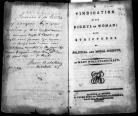

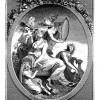
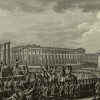

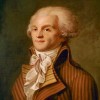
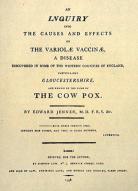
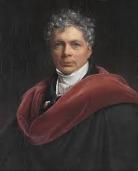
![Cruikshank note[1]](http://www.branchcollective.org/wp-content/uploads/2012/01/Cruikshank-note1-100x100.png)
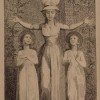
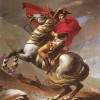
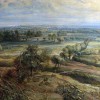
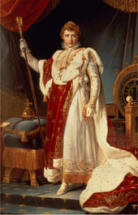

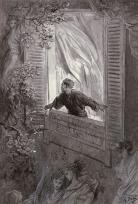



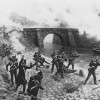
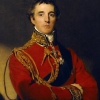
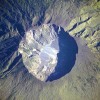
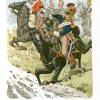



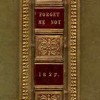
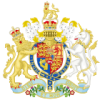


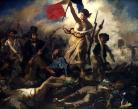
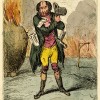

 On 11 June 1831, William Wordsworth composed the sonnet, "To B.R. Haydon, on Seeing His Picture of Napoleon Buonaparte on the Island of St. Helena," in response to Benjamin Robert Haydon's portrait of Napoleon, pictured here. Image:
On 11 June 1831, William Wordsworth composed the sonnet, "To B.R. Haydon, on Seeing His Picture of Napoleon Buonaparte on the Island of St. Helena," in response to Benjamin Robert Haydon's portrait of Napoleon, pictured here. Image: 

